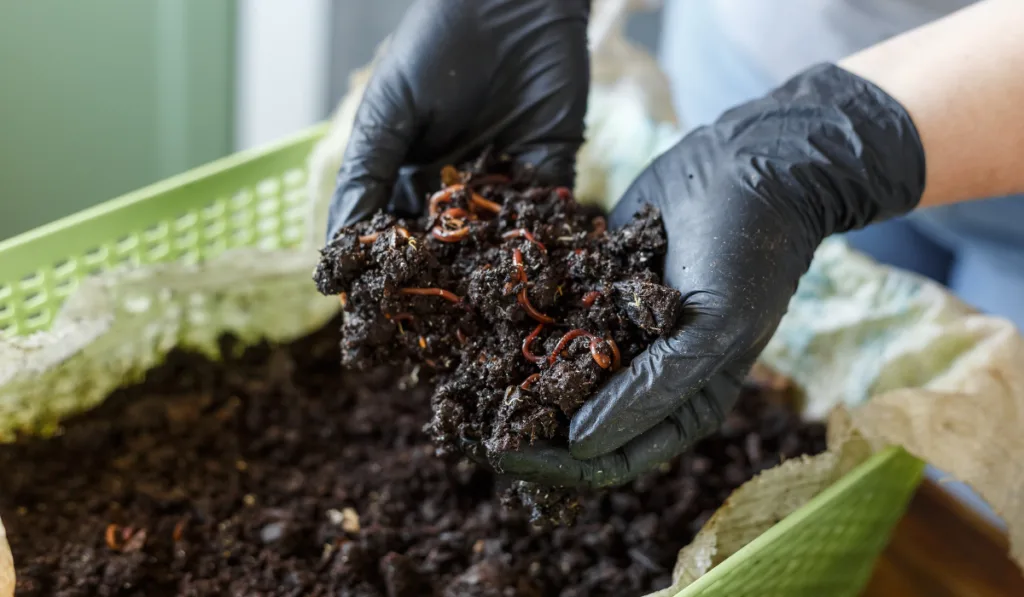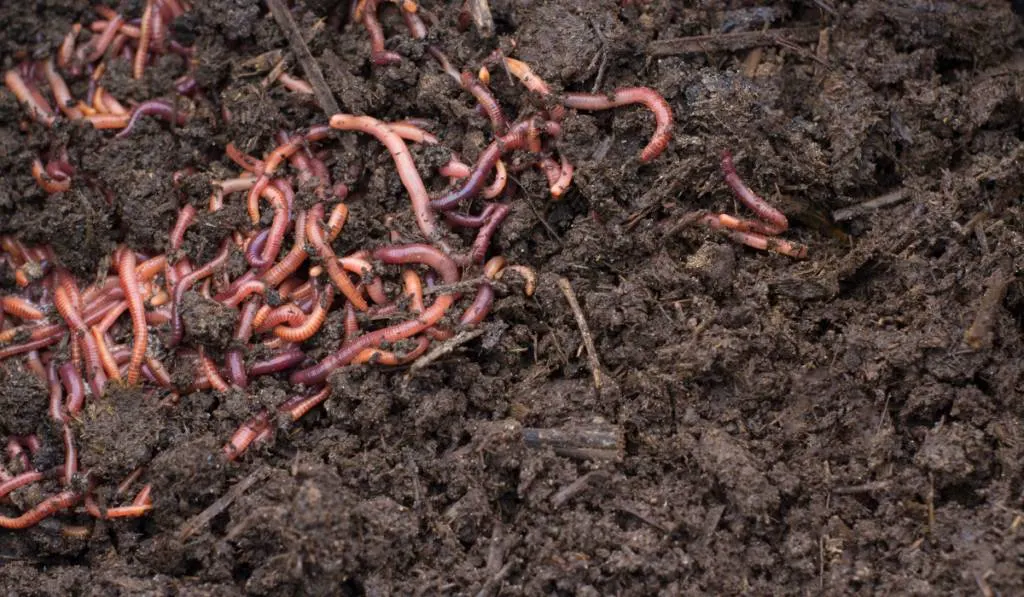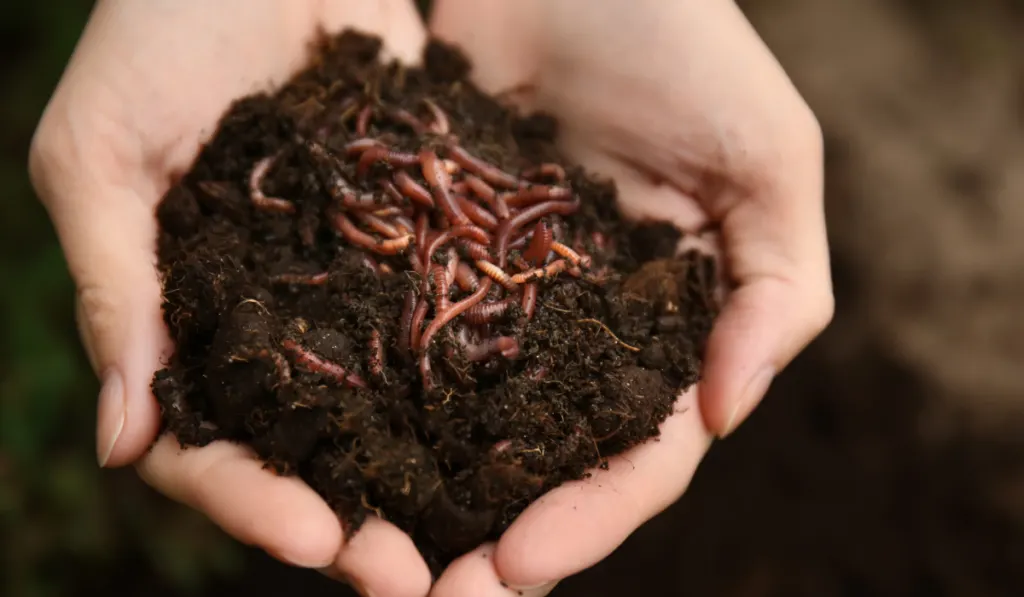Use of worms in gardening, a process called rather vermiculture, is a solution to gardeners who want to have useful microbes and worm castings in their garden soils.
Vermiculture is the cultivation of earthworms that are mainly used to create vermicompost. Vermicompost is the product excreted by earthworms that feed on and break down organic matter such as decomposing vegetables, plants and/or food waste.

Using worms in your garden helps to speed up the process of breaking down materials efficiently. They are good aerobic decomposers and soil amenders.
Table of Contents
Benefits of Worms in Gardens
Worms have the capability of mixing soil and consuming organic matter in order to produce castings or rather vermicomposts. Castings (worm poop) are full of nutrients which are vital in increasing plant growth.
Worms enhance air circulation when they move in your gardens. This gives room for the spread of plant roots. Widely spread roots are good in anchorage thus the plants become less prone to dehydration.
Worms reduce soil compaction and soil aggregation by crumbling the soil which leads to high water absorbing and good drainage unlike compacted soils whose water absorption capacity is poor.
Worms create tunnels in the soil which in turn improve water infiltration rate of soil thus the water absorption process is made easier.
They bring upwards the soil nutrients needed by plants thus increasing the amounts of nutrient availability.
They neutralize soil PH through the release of castings which the gardener uses to analyze if the soil PH is at 7, the neutral state.
Worms encourage the growth of microbial population. Nitrogen-fixing bacteria will be seen around their burrows.
They also take part in soil churning which improves soil porosity.
Worms can be used as food for domestic pets.

Nutrient-Rich Worm Castings
Worm castings are the waste materials excreted by earthworms. The earthworm’s gizzard grinds soil and food consumed by worms.
Intestinal juices are released as the material pass through the digestive system of the worms. The fluids contain enzymes such as amino acids and sugars which mix up.
The resulting mixture is then excreted from the castings to bind to the soil thus increasing soil fertility.
This process is referred to as vermicomposting and it is different from the traditional type of composting, where organic matter is added to a heap and then left to decompose into compost for garden use.
In vermicomposting, worms are added directly to your garden soil to create vermicompost that is rich in nutrients. This is easier than having to turn and mix a compost heap.
Vermicomposting increases plant yields and helps to suppress pests and diseases. This method has shown increased plant growth than the traditional method.
Vermicompost also produces nutrients that are available to plants, including calcium, potassium, phosphorus, magnesium and nitrogen.

Best Worms for Gardens
The best worms for raised bed gardens are red wiggler worms, Eisenia fetida. Other worms under the red wigglers category are Lumbricus rubellus.
However, when purchasing red wiggler worms, ensure that you use Eisenia fetida into your garden.
Red wiggler worms usually tend to stay on the upper surface of the soil and do not burrow deep into the soil. Worm species such as Lumbricus terrestris are capable of digging down, as deep as 6 feet.
Worms’ skins need to stay moist because they breathe through the skin. In order to keep the soil surface moist, you can add a layer of mulch after releasing red wigglers into your vegetable garden.
Shredded newspapers, brown leaves, grass clippings and straw can be good sources of mulch.
Additionally, you can add kitchen waste such as vegetable peels to your garden bed for worms to feed on them. However, you can still use the above mentioned sources of mulch and keep your soil moist and your worms will have plenty of food and water to keep them moist.
How to Know How Many Worms You Have
In order to know the worm population in your garden, you can use actual method by counting their numbers or using estimation method.
Estimation methods include:
Basic Estimation
The easiest way to guess how many worms you have in your garden is to section off a small area. This could be 10 – 20% of the garden and then count all of the worms in the soil.
If you measured 10% of the garden, multiply by 10 to get your estimate.
Of course, while none of the estimation methods listed are 100% accurate, this one is the least accurate. The reason for that is because worms are crawling animals.
Scientifically speaking, when measuring crawling animals you have to use different methods for population estimates.
Capture Recapture Method

This is a population estimation method where population count is done in two captures. In the first capture, the captured population of worms is tagged. After tagging, the worms are released back to the garden bed. This is taken as FC (first capture).
In the second capture (recapture), which takes close to 48 hours or more to allow them to mix, capture both the tagged and untagged worms and get the total number. This is taken as SC (second capture).
Identify the marked worms from the second capture and mark them again as MR (marked recaptured).
So the population will be estimated as:
Population = (FM x SC) / MR
This method works on an assumption that:
The marking does not affect the behavior of worms.
The time between the first capture and the second capture is enough to allow them to mix.
There is no movement of worms in and out of the garden bed during the study time.
Quadrat Method
A quadrat is a one meter square frame for population estimation.
The quadrat is thrown randomly into the garden bed and the number of worms within the frame is noted down. Several throws are made while noting down the number of worms in every throw.
Get the average number by adding up all the worms counted and dividing them by the number of throws. The resultant answer (average) is your population estimate.

How to Introduce Worms in Your Raised Bed Garden
Worms can be purchased and added to garden soil manually. You do not need the hassle of adding them to your garden. Just provide a conducive environment for them and they will show up on their own.
- Sprinkle 2 pounds of cornmeal on some parts of your garden.
- Mix the cornmeal with the garden’s topsoil using a shovel.
- Water the area to keep moisture level high. Avoid too much wetness.
In about 30 days, bacteria will be produced from that area which aids in the activity of the worms.
Organic matter such as compost can be used in place of cornmeal to add nutrients to the soil and also to attract worms.
Conclusion
Worms are beneficial to soil when it comes to aeration, soil amendment, provision of nutrients and increasing porosity. However, not all worms are beneficial. Some worms cause more harm than good and should be avoided.
Encyclopedia Britannica worm species contains both beneficial and harmful worms. The harmful species are terrible and can cause soil compaction and can destroy forests by destroying litters in the deep surface.
Resources
- https://www.aaipest.com/pest-control-blog/benefits-of-worms-in-garden-beds/
- https://homeguides.sfgate.com/add-worms-vegetable-garden-90294.html
- https://www.slickgarden.com/everything-you-need-to-know-about-adding-worms-in-your-raised-bed-garden/
- https://www.agrifarming.in/vermiculture-process-techniques-worm-farming
